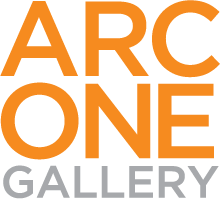Twisted Logic, Installation view, ARC ONE Gallery, 2019. Photo: John Gollings.
ARC ONE Gallery is delighted to present Twisted Logic, an exhibition of new sculptures by leading Australian contemporary artist Julie Rrap.
Taking as its central theme the historical fact that bronze artworks were often melted down to create weapons and armour with this process potentially reversed in times of peace, Twisted Logic articulates the ambiguous relationship that can exist between culture and politics. Art can be created or destroyed depending on political regimes.
Using cast sections from the artist’s body, Rrap’s bronze Arti-facts suggest an originary sculptural pose now transformed into objects that exist in an uncertain space between weaponry and armament. The artist’s body becomes the ‘material’ for these sculptural works through direct silicon moulding and casting in bronze; the effect creates an amalgam of vulnerability and strength that highlights the body ‘within’ conflict.
“Beating your Breast” Plate [detail], 2019, bronze and steel, 106 x 40 x 28.5 cm.
Existing in a suspended performative state between forming and un-forming, these sculptures embody a transformative process evocative of both destructive and creative forces. By focusing on the proposition that artworks can both manipulate and be manipulated by political persuasion, Twisted Logic foregrounds the impact that real-world situations can have on artistic outputs. These works explore the ways in which art can be a ‘tool’ both for culture’s potential complicity with, and resistance to, real-world issues.
This exhibition brings visual expression to the ongoing struggle in which the radical possibilities of art, to question and to challenge, can be silenced and possibly destroyed; it also suggests that art can re-form from the ashes of conflict.
Julie Rrap has been a central figure in Australian contemporary art for over four decades. Since the mid-1970s, she has worked with photography, painting, sculpture, performance and video in an ongoing project concerned with representations of the body.
In 1995, a survey of her work, Julie Rrap Works 1991–1995, was held at the Australian Centre for Contemporary Art (ACCA), Melbourne, and in 2007, the Museum of Contemporary Art held a major retrospective, Julie Rrap: Body Double, curated by Victoria Lynn. Other solo exhibitions include Remaking the World, Ian Potter Museum of Art, Melbourne (2015); Rrapture, Newcastle Art Gallery (2014) and Julie Rrap: Off Balance, Lismore Regional Gallery (2011).
Selected group exhibitions include Bodies of Art: Human Form from the National Collection, National Gallery of Australia, Canberra (2019); Dark Rooms: Women Directing the Lens 1978-98, Griffith University Art Museum, Brisbane (2018); Every Brilliant Eye: Australian Art of the 1990s, National Gallery of Victoria, Melbourne (2017); Lurid Beauty: Australian Surrealism and its Echoes, National Gallery of Victoria (2015); Biometrics, New Media Gallery, Anvil Centre, Vancouver (2014); Theatre of the World, Museum of Old and New Art, Tasmania; and La Maison Rouge, Paris (2013–2014); Volume One: MCA Collection, Museum of Contemporary Art Australia (2012); 14th Jakarta Biennale (2011); The Naked Face: Self-Portraits, The Ian Potter Centre, National Gallery of Victoria, Melbourne (2011); The Trickster, Gyeonggi Museum of Modern Art, Korea (2010); Reframing Darwin: evolution and art in Australia, Ian Potter Museum of Art, The University of Melbourne, Melbourne (2010); Turbulence: 3rd Auckland Triennial, Auckland, New Zealand (2008); Revolutions – Forms that Turn, 16th Biennale of Sydney (2008); Fieldwork: Australian Art 1968–2002, National Gallery of Victoria, Federation Square, Melbourne (2003); Body, Art Gallery of New South Wales, Sydney (1998); Systems End: Contemporary Art in Australia, The Dong Ah Gallery, Seoul, Korea, Hakone Open Air Gallery, Tokyo, Japan and Oxy Gallery, Osaka, Japan (1996); and Photography is Dead! Long Live Photography, Museum of Contemporary Art, Sydney (1995).
Monograph publications include Julie Rrap: Body Double, Victoria Lynn’s book to coincide with the MCA exhibition (co-published by Piper Press and the MCA) and Julie Rrap, also a Piper Press publication, 1998.
Julie Rrap’s work is held in every major public collection in Australia as well as many corporate and private collections in Australia, New Zealand, Belgium, Netherlands, Switzerland, Italy, France, and the U.S.A.
This project has been assisted by the Australian Government through the Australia Council, its arts funding and advisory body.


![“Beating your Breast” Plate [detail], 2019, bronze and steel, 106 x 40 x 28.5 cm.](https://images.squarespace-cdn.com/content/v1/54012345e4b0f72d40b6c44e/1573787034609-29W2E130WIUBSUA732QM/Rrap_%2522Beating+your+Breast%2522+Plate_2019_courtesy+the+artist+and+ARC+ONE_Photo+by+John+Gollings.jpg)
